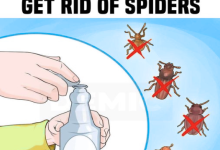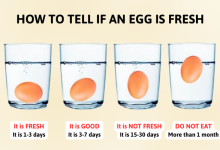The stove is the real workhorse of the kitchen, and even more. But do you really know how to use it safely? Here are ten tips to help keep your kitchen stove in good shape.
1. Install your anti-tip bracket

What’s an anti-tip bracket, you might ask? It’s the thing that comes with most ovens and is usually tossed aside without a second thought. But it has a purpose: It keeps the stove in place, which is particularly good if you have small kids around who might try to use the opened oven door as a step.
2. Use your back burners first

You probably already know to turn pot handles so they’re not hanging out over the stovetop edge, which keeps kids and errant elbows from knocking them. But here’s another smart tip: Use the back burners first, so hot pots are further from the edge.
3. Keep an eye on your pans

Sometimes you want your pan to be really hot, and that’s fine — if you keep an eye on it. When a pan is on high heat with nothing or just oil in it, it will heat up very quickly, and can be a fire risk: The oil or grease or even the lining on the pan itself could ignite.
If you want to get your pan very hot — whether on the stovetop or in the oven — a cast iron or carbon steel pan without any plastic or wood parts is the way to go. Just remember to use oven mitts!
4. Prevent Boil-overs

When cooking, use pots and pans that are deep enough to prevent boil-overs and splattering. Minimizing spillage will reduce cleanup work and help prolong the life of your stove.
5. Clean Spills Quickly

Cooking spills are inevitable. The good news is you can whisk away virtually any spill with a damp sponge or paper towel if you get it while it’s still warm. So get in the habit of wiping down your stovetop after every use-your stove will gleam like new for decades, and you’ll save yourself plenty of scrubbing.
6. Use Elbow Grease, Not Abrasives

Of course, human nature will prevail, and once in a while, you won’t wipe up stovetop spills right away. If a spill has had a chance to dry out and cook for a while, use a sponge along with a solution of dishwashing liquid and warm water or a 50-50 solution of vinegar and warm water. The longer you wait, the more elbow grease you’ll need to invest. An all-purpose cleaner is fine to use, but whatever you do, don’t give in to the temptation to grab that can of abrasive powder-you’ll create tiny scratches on the surface. The next spill will grip the scratches and be even harder to remove.
7. Clean the Stove Parts Regularly

In addition to an after-use wipe down, periodically give your stove parts a more extensive cleaning. Wash the burner drip plates and other removable accessories (but not electric burner coils) either by hand in the sink or by running them with your next dishwasher load (if the owner’s manual for your stove says they are dishwasher safe). Carefully remove control-panel knobs (usually by pulling straight out) and clean around the knobs’ bases. Wash the knobs in hot, soapy water, rinse, and dry them before replacing them.
8. Clean Under the Hood

If your stove doesn’t have a sealed cooktop, food and grease will fall down under the burners. It’s easy to forget about this out-of-view debris, so remember to lift the cooktop to clean beneath it. Follow the owner’s manual instructions for lifting the top without damaging it. Then clean the grease buildup with a sponge and warm, soapy water or a 50-50 solution of vinegar and warm water. Rinse with clean water and a sponge.
9. Invest in a fire extinguisher

And keep it nearby. Ideally, it should be a Class B type (look for the letter on the label), which is the best option for things that might catch fire in the kitchen. (Some fire extinguishers are better suited for wood or paper fires, while others are better for electrical fires).
10. Never throw water on a grease fire

If you don’t have an extinguisher, baking soda will work in a pinch for a small flare-up.







